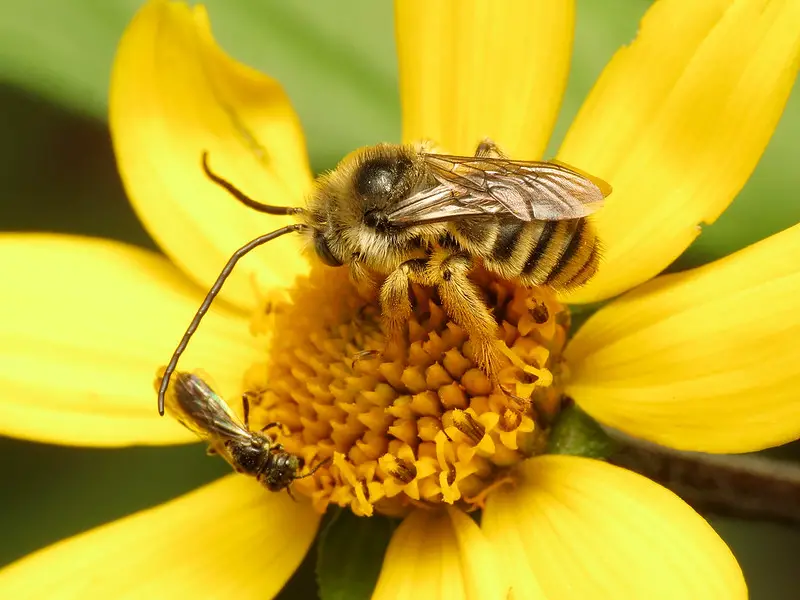Last updated on January 3rd, 2024 at 03:29 pm
When it comes to bees, the Long-Horned Bee, scientifically known as Eucera Longicornis, is a standout character.
With its distinctive long antennae and unique behaviour, this bee is a fascinating subject for both amateur naturalists and seasoned entomologists. Let’s delve into the captivating world of the Long-Horned Bee.
Appearance: The Antennae Steal the Show
First things first, let’s talk about what makes this bee a head-turner:
- Long Antennae: The most striking feature is the exceptionally long antennae, especially in males, which can be as long as their entire body.
- Colour: They generally have a black body with a slight metallic sheen.
- Size: Adult Long-Horned Bees range from 10-16mm in length.
Habitat: Where to Find Them
If you’re on a quest to spot these unique bees, here’s your treasure map:
- Geographical Spread: Predominantly found in Southern Europe, but they also make appearances in parts of the UK.
- Preferred Habitats: They love sandy soils and are often found in meadows, gardens, and farmlands.
Behaviour: More Than Just a Pretty Face
The Long-Horned Bee is not just about looks; it has some intriguing behaviours:
- Solitary Nature: These bees are solitary by nature. Each female digs her own nest in sandy soil.
- Nest Architecture: The nests are often complex, with multiple chambers for larvae.
- Mating Rituals: Males are known for their aggressive mating behaviors, using their long antennae to grasp females.
Diet: What’s on the Menu?
- Pollen and Nectar: Like most bees, they feed on pollen and nectar. They are particularly fond of legume flowers.
- Foraging Behavior: They are efficient foragers, often visiting multiple flower species in a single foraging trip.
When and Where to Spot Them
For the avid bee-spotters among you:
- Time of Year: They are most active from late spring to early autumn.
- Time of Day: They are diurnal, meaning they are active during daylight hours.
- Hotspots: Meadows rich in legume flowers are your best bet for spotting these bees.
| Best Time to Spot | Location | Activity Level |
|---|---|---|
| Morning | Meadows | High |
| Midday | Gardens | Moderate |
| Late Afternoon | Farmlands | Low |
Conservation Status: A Bee on the Brink?
- Population Decline: The Long-Horned Bee has seen a decline in numbers in some regions, mainly due to habitat loss.
- Conservation Efforts: Various initiatives aim to protect this species by preserving their natural habitats and promoting sustainable farming practices.
Why They Matter
The Long-Horned Bee plays a vital role in our ecosystem:
- Pollination: They are excellent pollinators for legume crops, contributing to agricultural productivity.
- Biodiversity: Their unique nesting habits make them important for soil aeration, which in turn benefits plant growth.
Conclusion
The Long-Horned Bee is a fascinating species that captivates not just with its appearance but also it’s unique behaviours and ecological roles. As we continue to explore the world of bees, it’s crucial to recognize the importance of each species, no matter how obscure.
Check out our ID guide for tips on identifying bee species.
So watch for those long antennae the next time you’re out in a meadow or garden. You just might be lucky enough to spot one of these remarkable creatures.
Long Horned Bee by Katja Schulz is licensed under CC BY 2.0




